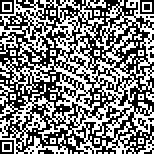| 本文已被:浏览 次 下载 次 |

码上扫一扫! |
|
|
| 海人酸致痫SD大鼠海马神经元树突棘的可塑性变化 |
|
宋兆莹1, 宫瑾2, 王颖3, 迟彦艳4, 赵杰5, 隋鸿锦4, 于胜波4
|
|
1. 大连市第三人民医院 临床药学科, 辽宁 大连 116031;2. 大连医科大学 基础医学院 解剖学实验室, 辽宁 大连 116044;3. 营口市中心医院 儿科, 辽宁 营口 115003;4. 大连医科大学 解剖学教研室, 辽宁 大连 116044;5. 大连医科大学 生理学教研室, 辽宁 大连 116044
|
|
| 摘要: |
| 目的 分析癫痫敏感形成期海马齿状回颗粒细胞和CA1区锥体细胞树突棘的可塑性变化特征,探讨树突可塑性在神经环路重组形态学机制中的作用。方法 本研究采用SD大鼠颈部皮下注射海人酸[KA,10 mg/(2mL·kg)]癫痫模型,对照组注射生理盐水。24只动物随机分成正常对照组(NS组)、癫痫发作3 d组(KA3d组)和癫痫发作7 d组(KA7d组)。癫痫动物发作达4级为造模成功,鼠脑经高尔基染色和火棉胶包埋与切片,在光镜水平检测海马齿状回分子层和CA1腔隙层树突棘的形态和密度。结果 KA3d组齿状回分子层内带和外带树突棘密度分别为(26.8±4.06)个/50 μm和(29.1±4.40)个/50 μm,显著高于对照组(P<0.05);KA7d组分别为(30.7±6.78)个/50 μm和(32.8±8.59)个/50 μm,显著高于KA3d组(P<0.05),其中KA3d和KA7d组无颈短棘密度均明显高于对照组,相反,KA3d组分子层内带有颈长棘密度未见显著变化,但其平均长度明显下降。KA7d组分子层内、外带有颈长棘密度明显高于对照组和KA3d组。齿状回分子层内带和外带的比较分析发现KA3d组齿状回分子层内带树突棘密度明显低于外带树突棘密度。KA7d组内、外带树突棘密度无明显差别,但外带的有颈长棘密度以及其在树突总数中的比例均显著高于内带。在海马CA1区腔隙层,KA3d组树突棘密度为(0.79±0.278)个/μm出现下降趋势,KA7d组树突棘密度为(0.69±0.313)个/μm明显低于对照组和KA3d组(P<0.05)。结论 海马结构内树突棘可塑性变化可能参与了癫痫敏感性形成的形态学机制。 |
| 关键词: 癫痫敏感性 树突棘 可塑性 海人酸 海马 |
| DOI:10.11724/jdmu.2019.05.02 |
| 分类号:R741.02 |
| 基金项目: |
|
| Plasticity of neuronal dendritic spines in epilepsy rats induced by kainic acid |
|
SONG Zhaoying1, GONG Jin2, WANG Ying3, CHI Yanyan4, ZHAO Jie5, SUI Hongjin4, YU Shengbo4
|
|
1. Clinical Pharmacy, the Third People's Hospital of Dalian, Dalian 116031, China;2. Anatomical Laboratory, Dalian Medical University, Dalian 116044, China;3. Pediatric Department, Yingkou Central Hospital, Yingkou 115003, China;4. Department of Anatomy, Dalian Medical University, Dalian 116044, China;5. Department of Physiology, Dalian Medical University, Dalian 116044, China
|
| Abstract: |
| Objective To study the plasticity characteristics of dendritic spines of CA1 pyramidal cells and dentate gyrus granule cells in duration of sensitive formation of epilepsy on hippocampus during the formation of seizure susceptibility in rats. Methods Twenty four SD rats were randomly divided into normal control group (NS), 3-day after seizures (KA3d) group and 7-day after seizures (KA7d) group. Epileptic rat models were made by subcutaneous injection of kainic acid[10 mg/(2mL·kg)] at neck and normal control group was injected normal saline instead of kainic acid. Animals, which had Level 4 epilepsy attack, meet the requirements of epilepsy models. The rats' brains were processed with Golgi staining and then made into continuous slices by using the technique of celloidin embedding. The morphology and density of the dendritic spine was observed and analyzed in the hippocampal dentate gyrus molecular layer and the lacunar layer of CA1 under the light microscope. Results Dendritic spine density in the inner and outer belts of dentate gyrus molecular layer of KA3d group were (26.8±4.06)/50 μm and (29.1±4.40)/50 μm respectively, which were significantly higher than those of NS group (P<0.05); they were (30.7±6.78)/50 μm and (32.8±8.59)/50 μm respectively in KA7d group, significantly higher than those in KA3d group (P<0.05). The density of the short spines without neck in both of the inner and outer belts of dentate gyrus molecular layer of KA3d and KA7d groups were significantly higher than that in NS group (P<0.05). On the other hand, the density of the long spines with neck in the inner bend of dentate gyrus molecular layer of KA3d group was remarkably unchanged compared with that in NS group, while the average length of long spine with neck decreased significantly (P<0.05). Compared with NS group and KA3d group, the density of long spine with neck in KA7d group significantly increased (P<0.05). In KA3d group the dendritic spine density of the inner belt was significantly lower than that of the outer one (P<0.05), while no significant difference was observed between the inner and outer belts in KA7d group, but in various dendritic spines, the density of long spine with neck and its proportion in the total amount of dendritic spines in the outer belt were apparently raised compared with the inner one (P<0.05). In the lacunar layer of hippocampal CA1 area, the density of dendritic spines in KA3d group was (0.79±0.278)/μm with a downward trend, while in KA7d group it was (0.69±0.313)/μm significantly reduced in comparison with KA3d and NS groups (P<0.05). Conclusion The plasticity dendritic spines of the hippocampus may be involved in formation mechanism of seizure susceptibility. |
| Key words: seizure susceptibility dendritic spine plasticity kainic acid (KA) hippocampus |